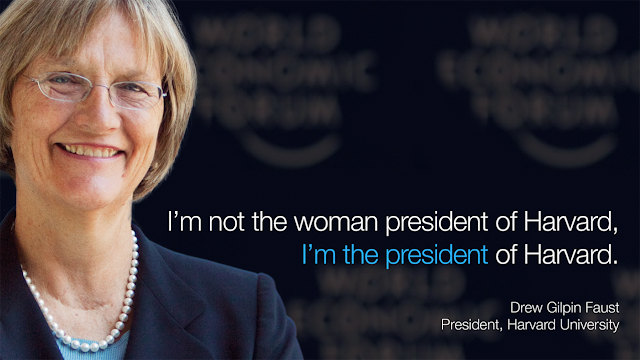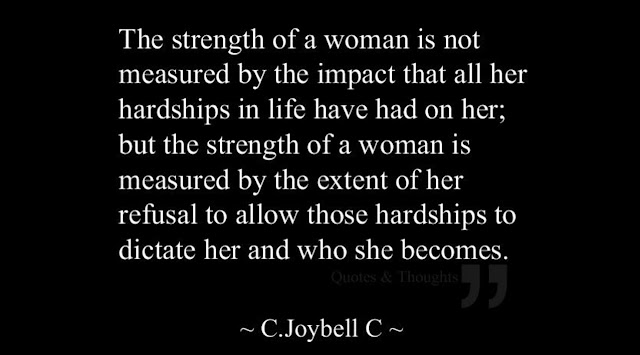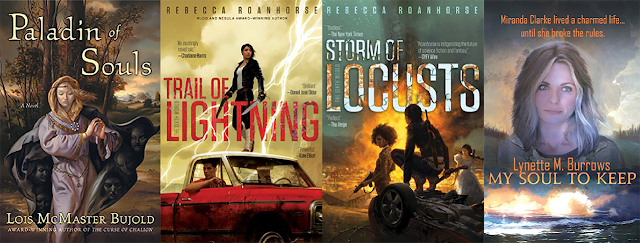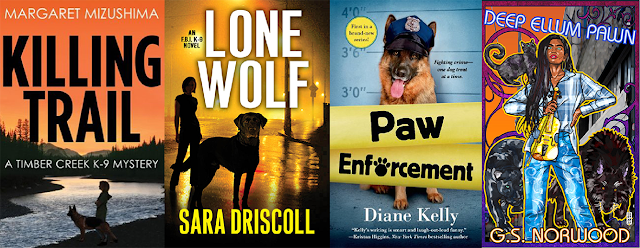By Jan S. Gephardt
What’s your first thought, when you see or read the phrase Strong Female Protagonists? What memorable characters come to mind? Do you smile at the idea of finally seeing more strong women in leading roles? Do you grind your teeth a bitt, at the fact that Strong Male Protagonists aren’t pointed out?
You can search for “Strong Female Protagonist” in several genres on Amazon. There are BISAC (Book Industry Standards and Communications) categories for “FICTION / Mystery & Detective / Women Sleuths,” and “FICTION / Women.” But you probably won’t be astonished to learn that no parallel Categories for “FICTION / Mystery & Detective / Men Sleuths,” or “FICTION / Men,” exist. Not unless you want to count “FICTION / Animals,” which I don’t.
And seriously: “Strong Female Protagonist” is doubly redundant. If your protagonist (male or female) is a wimpy pushover all the way through to the end, why would we want to read about her/him/them?
 |
| Three strong female protagonists from cinema. (Credits below). |
You-Hoo! Half of the Human Population, Here!
I’m reminded of the time when I asked one of my elder family members, “We have Mothers Day and Fathers Day, but when is Childrens Day?”
My relative laughed. “Every day is Childrens Day!”
My child-self found this answer less than satisfying, as you can imagine. And I feel a similar irritation with singling out female protagonists as somehow “unusual,” despite the fact that biologically female persons are only narrowly in the minority among the humans on the planet. (In 2020, there were estimated to be 101.69 male humans for every 100 females in the world. The reverse—more females than males—was the norm until about 1957).
But these categories exist because, as in so many other realms, male protagonists have been a default setting. More than that, really. There was an active mindset among the editors who chose what to publish. They selected for male (cis, white, straight) “heroes.”
 |
| Eliminate the excess qualifier. (World Economic Forum). |
Strong Female Protagonists
Very early in my writing career I was told “girls will read books with boy protagonists, but boys don’t want to read books about girls.” Therefore, write about boys if you want to sell better, was the bottom line. By that reasoning, girls didn’t have much choice, did they?
I started thinking about strong female protagonists most recently while reading We Dare: No Man’s Land: An Anthology of Strong Female Leads, edited by Jamie Ibson and Chris Kennedy. This is their third “We Dare” title. The others are An Anthology of Augmented Humanity, and An Anthology of the Apocalypse. The focus in all three is the subgenre Military Science Fiction.
On the whole, I enjoyed it. As in any anthology, some stories are stronger than others. Many had good moments. My personal favorites are Leaving Paradise, by Griffin Barber, None Left Behind, by Jonathan P. Brazee, and Ragged Old Golem, by Rachel Aukes.
And the best line I’ve read in months came from The Relentless, by Melissa Olthoff: "If you can't have fun being a space pirate, what are you even doing with your life?"
 |
| This anthology inspired this blog post (Chris Kennedy Publishing). |
Define “Strong”
Unfortunately, in some of the We Dare: No Man’s Land stories, the strong in “strong female protagonist” got a little twisted. Yes, I know most military science fiction leans toward the dystopic (read more about the appeal of dystopian stories). But in a few stories “strong” seemed more equated with kill ratio, ruthlessness, or “not dealing with trauma in a healthy manner” than it did with what I think of as strength.
Strong, to me, does not mean being so emotionally brittle you can’t have friends or trust anyone. It also doesn’t necessarily mean having the ability and willingness to mow one’s way through legions of enemies. Especially not when other approaches (involving less mayhem but more thinking) might also yield success.
 |
| Here’s one way to look at female strength (Quotemaster). |
Finding the Strength
There’s a reason why less-violent and less-physical characteristics don’t always register immediately as strong, and it has its roots in sexism. If you think of “male” and “female” traits, the gentler, kinder, more peaceable and nurturing traits are all lumped on the “female” side, along with “weak,” “soft,” and “emotional.”
“Strong,” on the other hand, is assumed to be a “male” trait. With that as the subconscious and conscious bias, a strong female protagonist is starting from a disadvantage by appearing to be an oxymoron, right out of the box.
Writers and readers also may mistakenly think she must have traditionally “male” characteristics to be “strong.” As if stuffing your feelings, smashing things, and killing people are any variety of “strong.” Toxic masculinity is also toxic for men.
 |
| Everyone faces challenges, regardless of gender/identity (ItsWorthQuoting on Twitter). |
Resiliency as Strength
I think a better way to look for true strength is to ask for a resilient protagonist. Sure, they need to be tough in the face of life’s outrageous fortunes. But to me the most important kind of strength isn’t so much in a person’s muscles as in their mind and their character. Are they strong, as in loyal to their word? Are they strong, as in steady and trustworthy? And are they strong enough to admit they can’t always handle everything without help?
Ursula Po, Gracie Medicine Crow, and Cassius were my favorite strong female protagonists from the third We Dare anthology. Well, Gracie was already a favorite, since I’m a fan of Jonathan Brazee’s Nebula-finalist novella, Weaponized Math (starring Gracie). Also of his Navy of Humankind: Wasp Squadron series, and his character Beth Dalisay.
 |
| Here are the covers of some books mentioned in this post (credits below). |
Favorite Strong Female Protagonists
Branching out from military sf (not really my wheelhouse), my first thought is Cordelia Naismith Vorkosigan (Shards of Honor, Barrayar, Gentleman Jole and the Red Queen). But then I realize that pretty much any woman who is a protagonist in a Lois McMaster Bujold novel. Ista of Chalion (Paladin of Souls) and Ekaterin Vorkosigan (Komarr, A Civil Campaign, The Flowers of Vashnoi) also leap to mind.
A speculative fantasy protagonist in a “warrior woman” vein, Rebecca Roanhorse’s Maggie Hoskie, kicks butt, kills monsters, and hates to admit she has a soft spot for some of her friends and allies. Find her in Roanhorse’s Sixth World books, Trail of Lightning and Storm of Locusts.
 |
| Here are the covers of some books mentioned in this post (credits below). |
Beyond “Spec-Fic”
Dystopian fiction does inescapably imply a certain level of trauma. Overcoming it and emerging on the other side is the classic story arc, especially in dystopian fiction. And the subgenre is full of strong female protagonists—including a few who don’t rack up a bunch of kills. An example who leaps to mind is Miranda Clarke, the strong female protagonist of Lynette M. Burrows’ My Soul to Keep. Miranda can defend herself, but she’s not cutting notches in her gun stock.
Leaping to yet another genre I’ve learned to love, I also should mention Margaret Mizushima’s Mattie Cobb (The Timber Creek K-9 mystery series) and Meg Jennings (along with her talented posse) in Sara Driscoll’s FBI K-9 mysteries. And just about any of Diane Kelly’s protagonists, although many of them would question that “strong” characterization at the start of the story.
I could go on and on, but I’ll offer just one more: Ms. Eddy Weekes, proprietor of Deep Ellum Pawn (and so much more) in G. S. Norwood’s Deep Ellum Series. Perhaps in a future post G. will offer her own thoughts on Strong Female Protagonists. Who are some of yours? Please share your thoughts in the Comments section!
 |
| Here are the covers of some books mentioned in this post (credits below). |
IMAGE CREDITS:
Many thanks to IndieWire for the photo of Sigourney Weaver as Ripley in Alien. We’re grateful to The Guardian for the photo of Linda Hamilton as Sarah Connor in Terminator 2. And we thank Marvel Cinematic Database for the photo of Brie Larson as Carol Danvers AKA Captain Marvel.
We deeply appreciate the World Economic Forum for the quote from Drew Gilpin Faust, President of Harvard University. Humble gratitude to Quotemaster for the C. Joybell C quote, And we thank ItsWorthQuoting on Twitter for the Ernest Hemingway quote. The We Dare: No Man’s Land cover is courtesy of Chris Kennedy Publishing.
Many thanks to Jonathan Brazee’s website for the cover images for Weaponized Math and Fire Ant. We have Barnes & Noble to thank for the Barrayar cover. We’re grateful to Amazon for the covers for The Flowers of Vashnoi, Paladin of Souls, and Paw Enforcement. Lynette M. Burrows’ website provided the cover image for My Soul to Keep.
Our thanks go out to Simon and Schuster for the covers of Rebecca Roanhorse’s Trail of Lightning and Storm of Locusts. Margaret Mizushima’s website provided the cover for Killing Trail, first in the Timber Creek K-9 series. The Lone Wolf cover (first of the FBI K-9 series) is from the website of Jen J. Danna and Sarah Driscoll. And Weird Sisters Publishing provided the cover art (© 2019 by Chaz Kemp) for Deep Ellum Pawn.
No comments:
Post a Comment